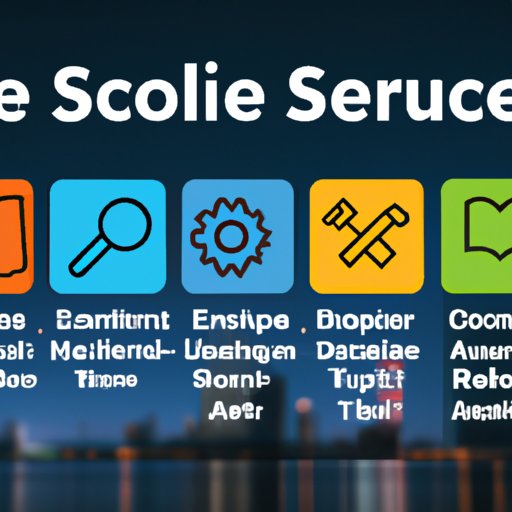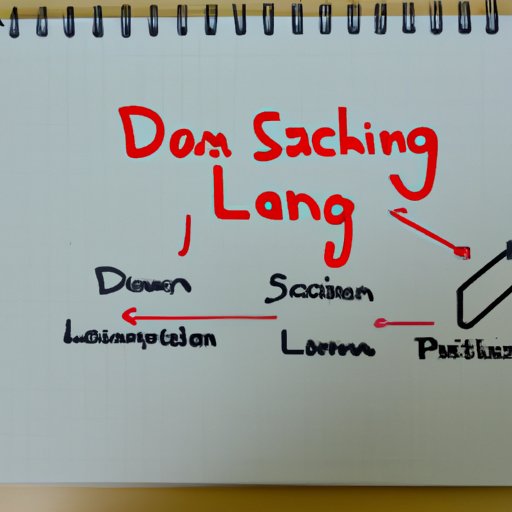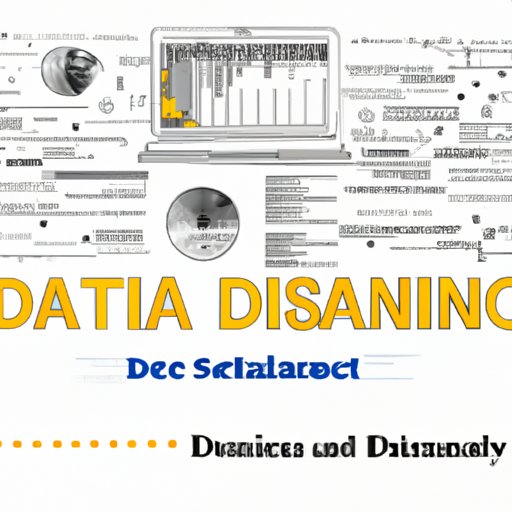Introduction
Data science is an interdisciplinary field that combines computer science, mathematics, and statistics to extract knowledge from large amounts of data. It involves a variety of techniques and technologies, such as machine learning, predictive analytics, artificial intelligence, and natural language processing. As businesses move more and more operations online, data science has become increasingly important.
Learning data science can help you build valuable skills and open up new career opportunities. It can also help you understand and make better decisions about the world around you. In this article, we’ll explore how to learn data science, from identifying the core skills you need to succeed in the field to applying what you’ve learned to real-world projects.

Identify the Core Skills Needed to Succeed in Data Science
Before you start learning data science, it’s important to understand the core skills needed to succeed in the field. These include:
Programming Skills
Data science requires a strong understanding of programming languages such as Python, R, and Java. You should be comfortable working with APIs, web scraping, and other forms of data manipulation. You should also be familiar with object-oriented programming concepts and design patterns.
Math and Statistics Knowledge
In order to work with data, you need to be comfortable with mathematics and statistics. This includes topics such as probability, linear algebra, calculus, and optimization. You should also have a solid understanding of statistical models and methods, such as regression and classification.
Database and Storage Management
Data scientists must be able to store and manipulate large amounts of data. This requires knowledge of database management systems, such as SQL and NoSQL, as well as cloud storage platforms like Amazon Web Services and Microsoft Azure.
Data Visualization Techniques
Data visualization is an important part of data science. You should be familiar with basic chart types, such as bar charts, line graphs, and scatter plots. You should also know how to use data visualization tools such as Tableau, Power BI, and Matplotlib.
Machine Learning Algorithms
Machine learning is a key component of data science. You should be familiar with supervised and unsupervised learning algorithms, such as decision trees, random forests, and clustering. You should also understand how to implement these algorithms using libraries like scikit-learn and TensorFlow.
Analytical Thinking
Data science requires strong problem-solving and critical thinking skills. You should be able to identify patterns in data and draw conclusions from them. You should also be able to communicate your findings effectively.

Develop a Plan of Action for Learning Data Science
Once you’ve identified the skills needed to succeed in data science, it’s time to develop a plan of action for learning. Here are some tips to help you get started:
Set realistic goals
It’s important to set realistic goals when learning data science. Start by breaking down the skills you need to learn and setting deadlines for each one. This will help you stay motivated and on track.
Choose an appropriate learning format
There are many different formats for learning data science, including online courses, textbooks, tutorials, and mentors. Choose the one that best fits your learning style and budget.
Make a timeline for completion
Creating a timeline for completing your learning objectives will help you stay on track and measure your progress. Set milestones for each skill you want to learn and assign deadlines for each milestone.
Choose the Right Resources to Learn Data Science
Once you’ve developed a plan of action for learning data science, it’s time to choose the right resources. Here are some of the most popular options:
Online courses
Online courses are a great way to learn data science. Platforms like Udemy, Coursera, and edX offer thousands of courses in data science, from introductory courses to more advanced topics. Many of these courses are free or offered at a discounted rate.
Textbooks
Textbooks are a great resource for learning data science. Look for books that focus on the specific topics you’re trying to learn, such as machine learning, data mining, and data visualization. Make sure to read reviews before purchasing a book to ensure it’s right for you.
Tutorials
Tutorials are another great resource for learning data science. Sites like Kaggle and DataCamp offer interactive tutorials that allow you to practice your skills in a hands-on environment. You can also find hundreds of free tutorials online.
Mentors
Mentorship can be a great way to learn data science. Look for experienced data scientists who can provide guidance and advice. You can find mentors through online communities, such as Reddit and LinkedIn.

Implement Strategies to Improve Your Data Science Knowledge
Once you’ve chosen the right resources to learn data science, it’s time to start implementing strategies to improve your knowledge. Here are some tips to help you get started:
Practice regularly
Make a habit of practicing regularly. Set aside time each day to work on data science problems and review the material you’ve learned. This will help you retain information and stay motivated.
Take advantage of online resources
The internet is full of free resources for learning data science. Take advantage of sites like Stack Overflow and GitHub to find answers to questions and collaborate with others. You can also join online communities to connect with other data scientists.
Ask questions
Don’t be afraid to ask questions when learning data science. Reach out to experts in the field or post questions in online forums. This will help you gain a better understanding of the material.
Experiment with different techniques
Data science is an ever-evolving field. Keep up with the latest trends by experimenting with different techniques and tools. This will help you stay ahead of the curve and gain a competitive edge.
Apply What You Have Learned to Real-World Projects
Once you’ve mastered the basics of data science, it’s time to apply what you’ve learned to real-world projects. Here are some tips to help you get started:
Find data sets to work on
Data sets are the foundation of data science. Look for publicly available data sets to work on. You can find data sets on sites like Kaggle and the UCI Machine Learning Repository.
Utilize available tools
Data science tools can help you manipulate and analyze data. Popular tools include Jupyter Notebook, Apache Spark, and TensorFlow. Familiarize yourself with these tools and learn how to use them effectively.
Collaborate with others
Collaborating with others is a great way to learn data science. Join online communities, such as Slack and Reddit, to connect with other data scientists. You can also join data science competitions to test your skills.
Conclusion
Learning data science can be a daunting task, but it doesn’t have to be. By following the tips in this article, you can develop a plan of action for learning and successfully apply what you’ve learned to real-world projects.
(Note: Is this article not meeting your expectations? Do you have knowledge or insights to share? Unlock new opportunities and expand your reach by joining our authors team. Click Registration to join us and share your expertise with our readers.)
